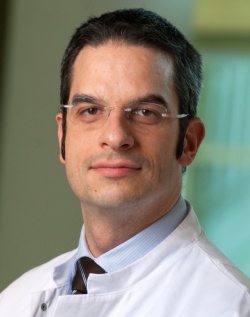The economic value of PET-CT - a scenario-based analysis
By Frederik I Giesel MD, Associated Professor of Radiology at the Nuclear Medicine Department, University of Heidelberg, Germany, and Philip Herold (Dipl.Econ.), Project Manager at RICT Heidelberg
PET/CT is an established clinical tool especially for cancer-related diagnosis. This involves both initial diagnosis and follow-up examinations. There are other procedures, like CT/MRT, bone scan, or mediastinoscopy, all of which are also costly. Given the fact that PET/CT is widely used anyway, the question arises whether it is medically responsible and financially favourable to focus solely on PET/CT examinations.


A study of 120 cases of lung cancer has shown that patients are properly restaged during follow up examinations with PET/CT, which makes the procedure sufficient in medical terms. PET/CT can thus replace a combination of the three other procedures, which both saves money and spares the patient from excessive diagnostic-activity.
The impact of switching from a case by case decision on what procedure(s) to use, to only relying on PET/CT, entails both direct and indirect effects. A direct effect, for example, is the immediate cost or time comparison between PET/CT and any other examination method. An indirect effect is, for example, the altered restaging (probability) for patients. Both groups of effects are discussed in detail.
Direct effects
The two most obvious direct effects of using PET/CT instead of other diagnostic methods are the difference in result and the difference in cost.
With respect to lung cancer, PET/CT basically delivers output of the same quality in terms of not overseeing lesions as CT/MRT, bone scan, or mediastinoscopy. Thus the results of all methods will be treated as equally useful for follow-up examinations.
However, the study shows that the likelihood of upstaging (follow-up results in operation rather than no operation) increased by 16% in the sample. This immediately changes the examination result in terms of quality. Assuming that patients were not mistakenly upstaged, this implies PET/CT was more effective. Hence, treatment quality increases. Thus, PET/CT becomes valuable in terms of exposing the patient to less follow-up examinations and the physician being able to react earlier.
Being left with the cost, one basically regards the cost per examination of one method or another. PET/CT is cheaper than mediastinoscopy, but more expensive than bone scan and CT/MRT. However, early upstaging implies (a) fewer follow-up examinations which in turn yields immediate savings and (b) might result in chemotherapy treatment rather than surgery, which would mean cost savings of about 40% per case.
The study further showed that about 8% of the patients could be down staged earlier when using PET/CT. This implies not only more certainty for the patient, but also savings in further follow-ups and mistaken treatment.
Indirect effects
A second view reveals that the choice of the examination method also influences the cost per examination. There are indirect effects of the decision about which method to use on the cost structure of all the examination processes.
If management decides to use only one rather than three examination methods, so called economies of scale can be realised.
Increased standardization and routine helps staff to decrease process time and handle cases more effectively. For example, the time-intensive step of deciding on the appropriate method and eventually revising this decision can be left out.
Using only one method also implies that only one type of device has to be in place. The utilisation of this device can be maximised by concentrating all examinations on this device. Note that this argument doesn’t hold if other devices are fully utilised anyway.
Maintenance cost and related decrease as well as specialisation effects rise. This can be sourcing-related in terms of, for example, a help desk. This could also be material related in terms of, for example, tracer. As more patients are scheduled per day, management might be able to use tracers reserved for cancelled examinations elsewhere and thus avoid the cost of having tracers expire.
Further economies of scale may incur in the diagnosis-routine, as physicians become more specialised and the output (report) naturally more standardised. In turn, this also benefits the treating physician.
Conclusion - Focusing on PET/CT is clinically favourable in terms of patients’ convenience and financially favourable in terms of cost savings. It further evaluates the economies of scale of focusing on that one procedure e.g. decreased marginal cost and enhanced operational efficiency due to routine.
Based upon these insights it seems advisable to reconsider further diagnostic sequences for their economics. Not only on a stand alone basis, but also for how they interact. On only a holistic basis, synergies can be identified both in terms of financial impact and patient distress.
28.10.2010











